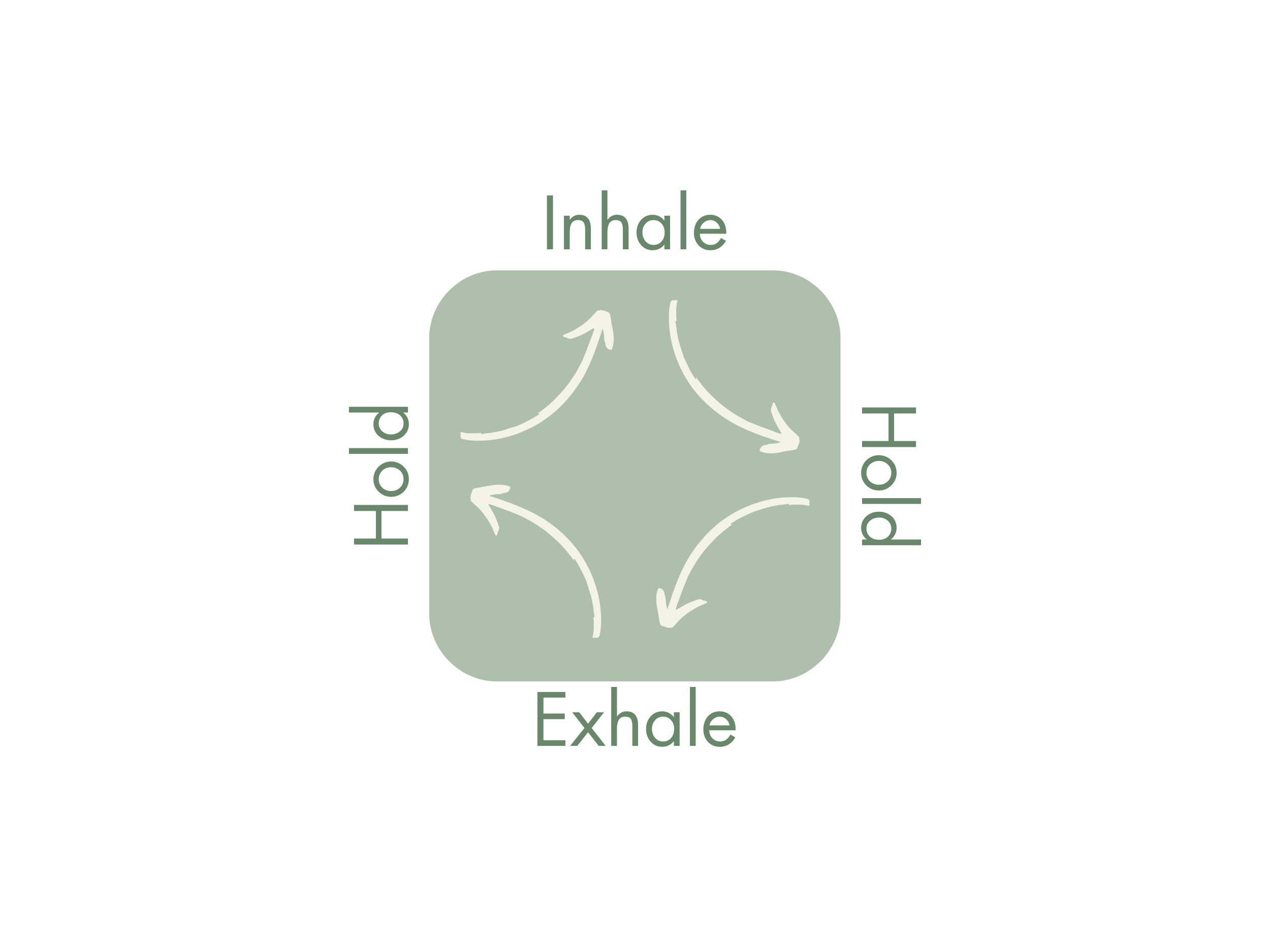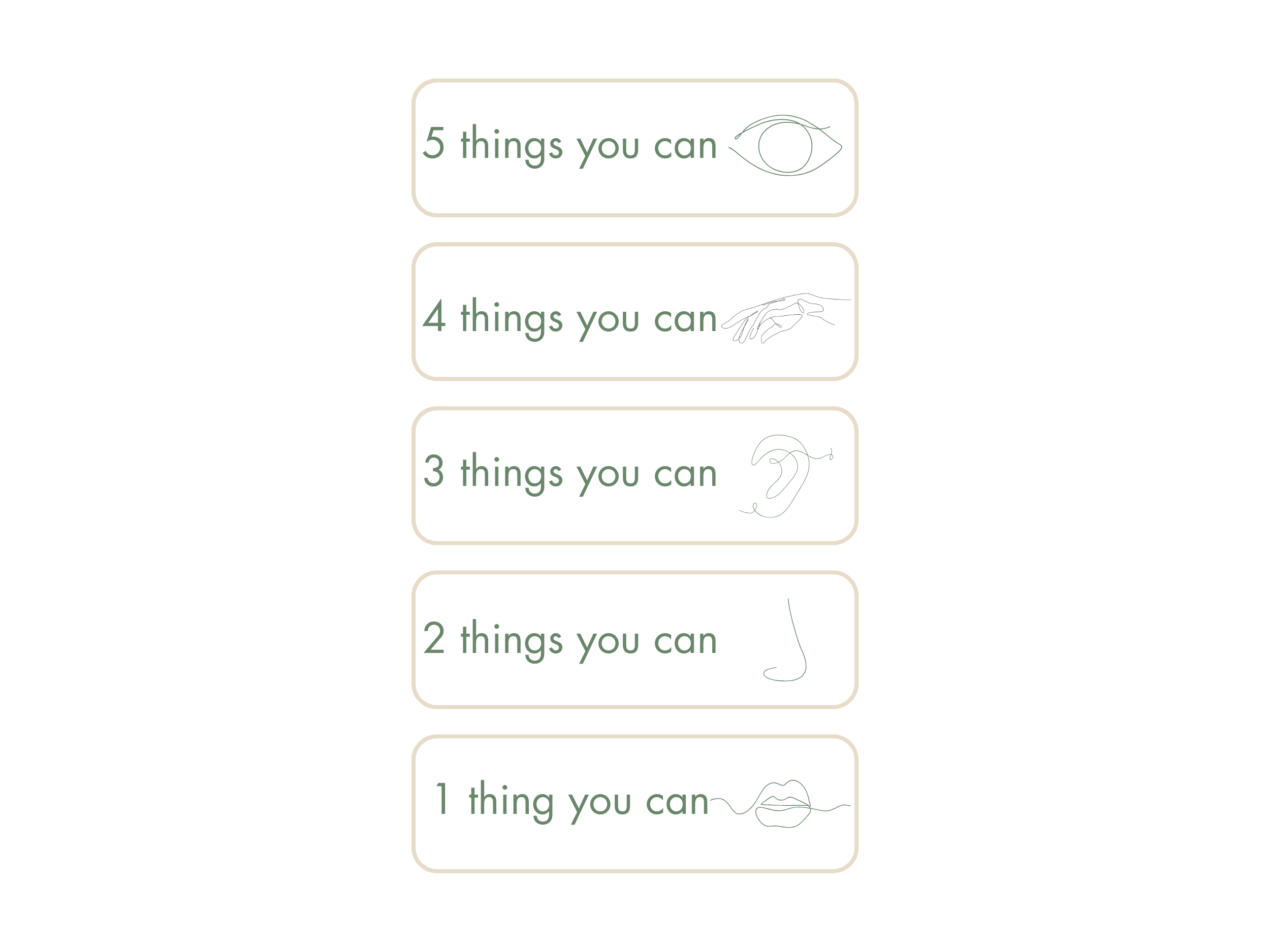Grounding Exercises Toolkit
In this toolkit, you’ll gain resources for regulating your nervous system during stressful or activating times. But before we get to the good stuff, let’s take a deep dive into why grounding exercises actually work!
Autonomic Nervous System Functions
It all begins with your nervous system. The autonomic nervous system encompasses two branches: your parasympathetic branch and sympathetic branch. When your body perceives a threat or stressor, your sympathetic nervous system (SNS) kicks into full gear. Your brain sends signals to your spinal cord to release the stress hormones norepinephrine and epinephrine (adrenaline) that bind to receptors on different organs in your body. This can cause various downstream effects, such as the following:
Increased heart rate and blood pressure to pump more blood and oxygen to your muscles and organs
Expand your airways to allow for increased oxygen intake
Stop digestion to conserve energy
Stimulate your sweat glands to regulate your body temperature
Dilate your pupils to improve vision for stressful situations
Thousands of years ago when we were hunters and gatherers, our SNS activation quite literally saved our lives from predators. Think about it, all those functions serve us pretty well if we’re fighting a black bear. However, in the 21st century where late-stage capitalism has taken full effect, this isn’t as much of an issue. Therefore, our nervous systems have evolved to being activated by a full email inbox, back-to-back work meetings, and getting stuck in rush hour traffic. Don’t get me wrong, while these issues are really stressful, they (hopefully) aren’t actively life threatening. However, chronic nervous system activation can lead to various negative downstream effects, such as:
Increased risk of heart disease
High blood pressure
Weakened immune system
Sleep and digestive issues
Chronic pain
Weight fluctuations
Difficulty concentrating
Heightened anxiety and depression
Therefore, it’s important to learn how to manage these persistent stressors by using coping skills, such as grounding and breathing exercises. These exercises aim to activate the parasympathetic nervous system (PNS), which controls your body’s activity during times of rest. The PNS functions in some of the following ways to maintain bodily balance and promote relaxation:
Slows heart rate and lowers blood pressure
Tightens airway muscles and reduces amount of work your lungs do while at rest
Increases digestion rate and diverts energy to digest food
Relaxes muscles to help you poop and pee
Contracts the pupils and focuses the eye
Manages some of your body’s sexual functions related to arousal
How to Calm the Nervous System
There is a way to trick your body into switching from the sympathetic (fight or flight) to the parasympathetic (rest and digest) response, and that’s where breathwork and grounding in your present environment come into play!
Mindful Breathing
By breathing out for a longer count than you breathe in, your nervous system switches from the short, choppy breathing of the SNS and activates the slower and more regulated breath of the PNS.
Breathe in through the nose for 4 counts.
Hold at the top of the breath for 2 counts.
Breathe out through the mouth for 6 counts.
Hold at the bottom of the breath for 2 counts.
Repeat for as many rounds as it takes for you to start feeling a sense of balance.
Depiction of mindful breathing exercise.
Box Breathing
Allow your breath to follow the shape of a box.
Breathe in for four
Hold for four
Exhale for four
Hold for four
Repeat for as many times as you desire until you start to feel more regulated.
Box breathing exercise.
Fire Breathing
This breathing can facilitate the release of stagnant SNS energy.
Inhale through the nose, fully extending the belly until you’ve reached capacity
Hold for a moment
Exhale while contracting the belly to the spine with an explosion of breath from the back of the throat through the mouth making a “HAAAA” sound for a longer amount of time than the inhale
Hold for a moment
Repeat for as many times until you feel that there is clarity and release in the body.
Fire breathing visualization.
5-4-3-2-1 Grounding Exercise
This exercise aims to ground you in your environment, so that you can stay present. Place your feet on the floor, and take a moment and look around.
List 5 things that you can immediately see
Name 4 things you can hear in this moment (e.g., hum of the air conditioner, birds chirping outside, doors opening and closing in the building, airplane above, etc.)
Touch 3 things you can physically feel (e.g., the back of your chair against your spine, the balls of your feet touching the ground, etc.)
Observe 2 things you can either smell (e.g., smell something being made in the kitchen)
Find 1 thing you can taste (e.g., a drink or food next to you)
5-4-3-2-1 Grounding Exercise Visualization.
Hand Breathing
This grounding exercise allows you to focus in on your body by paying attention to one specific part, your hand! You’ll trace one fingertip along your opposite hand. As you trace slowly up your finger, take a deep inhale, and then hold for a moment at the tip of your finger. Take an even longer exhale as you trace down your finger and hold for a moment at the base. You repeat this for each finger. Do this for as many times as it takes to feel grounded.
Hand Breathing Exercise
Learn More
If you’re interested in learning different ways to regulate your nervous system or if you’d like to unpack the underlying causes of your stress or activation, you can book a session with me here:
I look forward to hearing from you!




